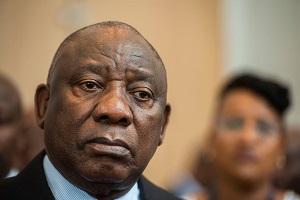Umm Abdillah, Radio Islam Programming | 2015.10.09 | 25 Dhul Hijjah 1436
Saudi Arabia claims nearly 770 people were martyred in the Mina stampede of 2015. However officials at Iran’s Hajj and Pilgrimage Organization say about 4,700 people, including 464 Iranians, lost their lives in the tragedy.
How does a deadly statistic almost quadruple without any independent fact-finding mission? In this article Umm Abdillah looks at how Hajj has historically been a source of tension between Saudi Arabia and Iran.
Hajj divides between Iran and Saudi
Shocking news tricked out on the day of Eidul Adha of a stampede in Mina.
The stampede gave rise to a number of conspiracy theories. From allegations of deliberately closed roads, to a US plot to undermine the Hajj, and even examining the physics of the stampede; theories have ranged from thoughtful to the bizarre.
Almost immediately Shia Iran blamed Saudi Arabia for the Mina disaster, saying its incompetence and mismanagement caused the death of pilgrims, who either suffocated or were trampled to death. Iran demanded an apology from Saudi Arabia. Subsequently, the media in the two countries quickly threw their weight behind their respective governments.
Iran, locked in a battle for supremacy with Saudi allies in Iraq, Syria and Yemen is actively campaigning for an International Islamic body, not Saudi Arabia, to oversee the management of the Hajj.
Earlier this year, Iran suspended all umrah pilgrimages to Saudi Arabia. The decision was made over alleged sexual abuse suffered by two male Iranian pilgrims travelling through Saudi’s Jeddah airport in March.
We discover that stampede this year was not the first major incident causing tensions between the two governments over the Hajj.
Banning Hajj is nothing new for Iran
While the Shia have historically held an opposing doctrine to most of the Muslim world, the animosity toward the Saudi’s trickles back to the 1920’s when Iran refused to recognise ibn Saud as the first monarch and founder of Saudi Arabia.
Back in 1925 the “Wahabi” government destroyed parts of Al Baqee graveyard. This caused outrage in Iran, with the Iranian government calling for the ousting of ibn Saud, and banning Iranians from performing the pilgrimage in 1927.
Interestingly, in 1935, armed men attacked and tried to assassinate Ibn Saud during his performance of Hajj.
Then years later in 1943, an Iranian pilgrim was beheaded based on charges that he brought feaces into the Masjid in Makkatul Mukarramah. Iran thus suspended pilgrimage until 1948.
From the early 70’s Iranian pilgrims had tried to stage demonstrations called “Distancing Ourselves from Mushrikin” in Makkatul Mukarramah during the Hajj season. These demonstrations had their origins in 1971, when Khomeini instructed his Shiite followers to distribute political messages when performing their pilgrimage. The practice of distributing political messages, which were mainly criticism of the United States and Israel, as well as pro-Western governments, continued up until the year 1981.
In 1981, this was escalated into openly chanting political slogans in Masjid al-Haram and Masjide Nabawi (ﷺ), resulting in violent clashes with Saudi security and a death.
In the following years, both sides tried to calm the situation and Saudi officials reversed their earlier position allowing two separate demonstrations to take place: One in Makkah, and another in Madina.
Tensions seemed to be abating. By 1986 Saudi officials re-opened the sealed al-Baqi’ cemetery for Shiite pilgrims, and in response, Khomeini’s representative formally thanked the Saudi King for the gesture. However, in the same year, Iranian radical Mehdi Hashemi was accused of smuggling explosives on an airplane headed for Saudi Arabia, renewing tensions.
In 1987, Saudi police and National Guards sealed part of the planned Iranian demonstration route, leading to a confrontation between them and the pilgrims. This escalated into a violent clash, followed by a deadly stampede. There remains controversy regarding the details of the incident, with both Iran and Saudi Arabia laying much of the blame on the other side. Sources claim the death toll from the incident was 402 people including 275 Iranian pilgrims.
After the 1987 clashes in Makkatul Mukarramah Iran prevented pilgrims from performing Hajj for another three years.
Bizarre
Back to 2015, of the most bizarre theories relating to the Mina stampede this year was one put forward by a former Iranian diplomat. He alleges that six Iranian Revolutionary Guard officers were responsible for the Hajj stampede.
Farzad Farhangian, who defected from Iran in 2010 and sought asylum in Norway says the stampede was part of a plot by Tehran to stir-up violence during the pilgrimage season.
“The operation which took place [near Makkah] is a terrorist operation. There were more than 5,000 Revolutionary Guards among the Iranian pilgrims. The plot aimed to cause a much higher number of deaths among pilgrims but the Saudi security agencies’ swift response foiled the operation.”
While most have fobbed off Farhangian’s claims, the high number of Iranian military and political personnel going for Hajj this year has raised some questions. Among the most notable was the former Iranian ambassador to Lebanon, Ghadanfar Rokon Abadi, who is still reported to be missing with 68 other Iranians.
On Oct. 6, Iran’s Health Minister Hassan Ghazizadeh Hashemi said, “Some of the missing may be arrested, or in detention centers or the prisons of Saudi Arabia.” His announcement hinted that there were a number of high-ranking scientists and diplomats among the hajj pilgrims, and their possible detention or interrogation would expose Iran to security or intelligence risks.
Ayatollah Ali Khamenei’s representative to the hajj pilgrimage rebutted by asking officials not to speculate about the missing Iranians and asked the public to not pay attention to rumours.
Aftermath
The hajj stampede has taken some of the lustre off the image of the kingdom in many other countries aside from Iran. Many people are still missing; there is very slow progress in the identification of victims from the Mina stampede and the repatriation of bodies continues.
The stampede has raised familiar questions about organisation, safety, levels of competence, and a general lack of civic awareness and official accountability in the kingdom. The ongoing construction boom, Saudi arrogance, and poor communications are all duly coming under the hammer.
Meanwhile, the Saudi Arabian Ambassador to Pakistan Abdullah al-Zahrani said findings of a probe into the Mina stampede would be made public. He said it was not in the interests of the truth to listen to malicious rumours and speculations by people who are not aware of facts and only aim at misleading public opinion.
This view was also endorsed by Pakistan’s Mufti, Sheikh Taqi Uthmani (db) who condemned parties’ seeking to politicise the stampede in Mina.







0 Comments